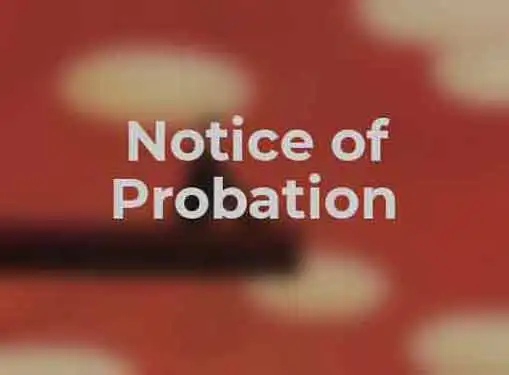Terminating Employees
Warning Letter Notice Of Probation
When an employee's performance or behavior isn't up to snuff, it's time to establish a probationary period - and the way it's done is with a warning letter notice of probation.
If you're like most small business employers, you're working on a tight budget with little room for error.

You just can't afford to carry the weight of chronically under-achieving or badly behaved employees. Employee probation is an effective way to address employee problems as long as you know what you're getting into before you start throwing the term "probation" around the office.
Employee probation begins with a warning letter notice of probation and a face-to-face meeting with the worker in question. It's likely that the problem won't come as a surprise - the employee's file is probably rife with mediocre to poor performance reviews.
Additionally, the issue of probation should be discussed in a written policy or employee handbook before you place your first worker on probation. If it isn't, you run the risk of accusations that you are singling the employee out and treating him unfairly. A company-wide policy makes it clear that the same conditions apply to your entire workforce.
Once your policy is in place, you're free to initiate probationary procedures with under-performing employees. Here's the information your warning letters should contain.
- Nature of the problem. Warning letters for notice of probation shouldn't come from left field. If you've done your HR job properly, probation should be the result of repeated attempts to address specific problems. Define the nature of those problems and make reference to the actions that led up to probation.
- Last chance verbiage. Employees need to take probation seriously. Instead of seeing it as a second chance to get it right, they should see it as a last chance to prove their worth to the company. Don't mince words - lay out the fact that this may be the employee's final opportunity to improve poor performance or correct unacceptable behavior.
- Process description. Probation is a vague word. Use the warning letter as an opportunity to reinforce the probation process that has already been defined by your company policy. The process description should clearly identify next steps and process outcomes.
- Response mechanism. You can't put an employee on probation and then not take any further action. The warning letter should tell the employee who their contact is during the probationary period and how they should respond to the probationary decision.
- Employee signature. Employees should sign the letter as a condition of continued employment. Without a signature, the legal strength of the document may be in jeopardy.
Share this article
Additional Resources for Entrepreneurs


Conversation Board
We greatly appreciate any advice you can provide on this topic. Please contribute your insights on this topic so others can benefit.